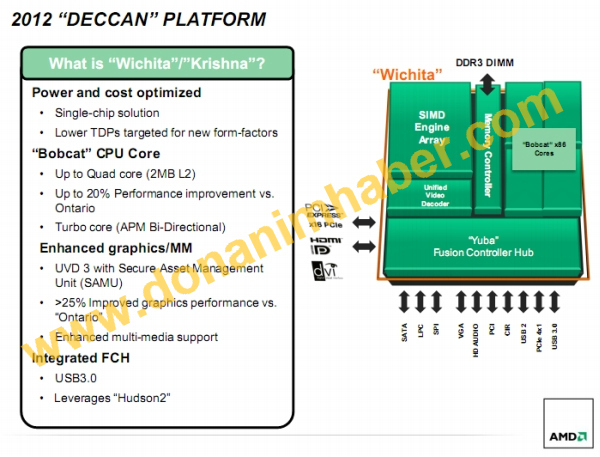But a the same time they decided things like putting in a big IGP and them starve it(and they still do!), and the dedicated pci-e lanes intended for dgpus, the big chipset that supported 14 USB, 6 SATA and another 4 PCI-E
Not sure if OEM ever figure it out that was better to just use the pci-e of the APU for devices instead of the chipset ones.
Anyway, its like they where not sure of what the intended market was(Desktop, AIO, Netbook, Notebook? lets do it all), thats why it looks more like a concept prototype that they decided to sell.
And personally, i think AMD let all his other mobiles platforms die, in what i suspect it was an attempt to sell this, i cant blame OEMs for placing Brazos where i did not fit, there just was no other option. Its a shame the nvidia decided to burn its chipset division, maybe they could have come out with something viable to use along other AMD Mobile cpus.
thats the problem when you have managers to make the decision
they have no idea of the product they are selling the look in numbers features and numbers that really does not make sense.
but brazos could fit in a market the original e350 to make a computer as media center. where atom failed because it could not play the videos. so the product as it was delivered it had a market and was okey.
the problem is what followed of the e350
e450 was a good improvement but the gains in cpu power was so little that did not make the need to upgrade from the e350 and many after that
for desktop the cooling solution was not good enough to provide a cool experience thank you oems for cheaping out there.
more or less amp copy intel atom in features but was able to put a better igp in the chip.
they had no vision of the future we made a good product we sold like crazy then what?????
igp must be good enough to do some basic stuff play the media files be able to surf the net.
for the rest the people will go to a dgpu
insted of all that usb if the put more sata
thay could sell it as nas solution for home and small business
maybe even have a more expensive model with ecc
what amp did not done is intel doing now with i3 supporting ecc from sandy bridge pair an i3 with a professional chip-set and you have a low cost ecc platform
the 4 pci lanes could help to put a raid card for that direction
also if they focus later to improve the cpu then it would even make sense to use a dgpu to get a bit more graphic power
definitely they should have a double channel memory even as a more
option
but amp focus in more gpu
as it was focusing in more cores
they focus in the complete wrong aspect





